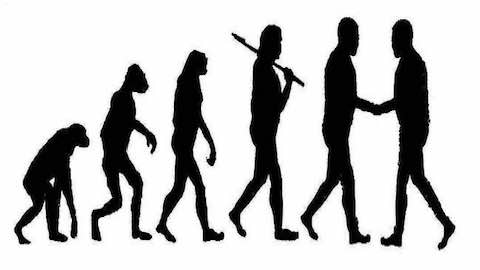- MENU
- HOME
- SEARCH
- WORLD
- MAIN
- AFRICA
- ASIA
- BALKANS
- EUROPE
- LATIN AMERICA
- MIDDLE EAST
- United Kingdom
- United States
- Argentina
- Australia
- Austria
- Benelux
- Brazil
- Canada
- China
- France
- Germany
- Greece
- Hungary
- India
- Indonesia
- Ireland
- Israel
- Italy
- Japan
- Korea
- Mexico
- New Zealand
- Pakistan
- Philippines
- Poland
- Russia
- South Africa
- Spain
- Taiwan
- Turkey
- USA
- BUSINESS
- WEALTH
- STOCKS
- TECH
- HEALTH
- LIFESTYLE
- ENTERTAINMENT
- SPORTS
- RSS
- iHaveNet.com: Middle East

Realizing Peace
By Heath Mitchell
A new book on conflict resolution provides a history of the subject and a counterfactual history of recent events.
Louis Kriesberg set himself a delicate task in writing Realizing Peace.
By emphasizing alternative possibilities, Kriesberg walks a literary tightrope between history and counterfactual history. Kriesberg’s work is at its best when he pushes the limits of his vows to academic objectivity by proposing truly innovative prescriptions for conflict alleviation, such as granting debt forgiveness to Yugoslavia before the outbreak of their civil war, jamming the radio programs inciting genocide in Rwanda, or creating an international fund for the compensation and resettlement of Palestinian refugees (an idea he credits to Walter Russell Mead). In his opening chapter, Kriesberg concedes that he has the benefit of hindsight when analyzing the facts of history -- and he capitalizes on it.
Kriesberg’s reading of American foreign engagement from the outset of the Cold War to 2014 utilizes a specific lens known as the Constructive Conflict Approach. This approach frames conflict as a positive development towards enhanced justice and equity. It necessitates a less militarist approach to conflict and instead promotes mediation and mutual understanding between adversaries. The approach is premised on the notion that conflicts, as social constructs, are highly mutable and encourages long-term and big-picture analysis of how various conflicts and party interests are interconnected.
Realizing Peace is written in the form of a history instead of as a series of case studies. This affords the reader two distinct advantages. First of all, it allows a comprehensive assessment of each American administration in its constructive application of conflict management. Next, it allows Kriesberg to relate how the field of peace studies and the very concept of the Constructive Conflict Approach evolved in relation to its political context.
Approximately a third of the book is dedicated to the Cold War and the infancy of peace studies. Kriesberg is most balanced in his appraisal of the Gulf War. Although it is regarded by many as America’s greatest military victory since the Second World War, Kriesberg refreshingly shows just how unnecessary this military engagement was. Yet he also confirms that President George H.W. Bush successfully incorporated elements of the Constructive Conflict Approach into Operation Desert Storm.
Kriesberg provides no such cover to George W Bush and his invasion of Iraq. His analysis of the opening decade of the new millennium is relentless in pointing out missed opportunities for greater peace and security from Kyoto to Kabul, and diplomatic missteps from Kim Jung Il to Saddam Hussein, not to mention the missed opportunity for global solidarity after the attacks of September 11th. Sandwiched between the discussion of the Bushes is a particularly insightful critique of Clinton’s unnecessary expansion of the crisis in Yugoslavia.
In any book about conflict resolution and peacebuilding, the Israeli -- Palestinian situation looms large. Kriesberg does commendable service to the issue without allowing it to take up too much space. In a book that is focused on proposing alternatives, the underlying assumption is that peace is always possible. Although Kriesberg admits that the actors involved may not have made a peace agreement feasible during the Obama administration, he suggests that efforts to build a more just and equitable society in Palestine -- Israel have the potential to create such an agreement in the future.
Kriesberg doggedly pursues his goal of examining US engagement in conflicts and proposing alternatives through the constructive conflict approach. Realizing Peace would have greatly benefited from a discussion of how the United States succeeded in mediating a peace agreement, namely Northern Ireland’s Good Friday Agreement. Additionally, Kriesberg is surprisingly silent on the potential application of the constructive conflict approach to Obama’s “Pacific Pivot”.
Realizing Peace carefully navigates the line between American engagement abroad as it was and as it could have been. The book dares you to jump into the void of exploring what history could have looked like, and, more importantly, it reminds you that America always has a choice in how it chooses to engage the world.
Article: Courtesy Foreign Policy in Focus.
"Realizing Peace"